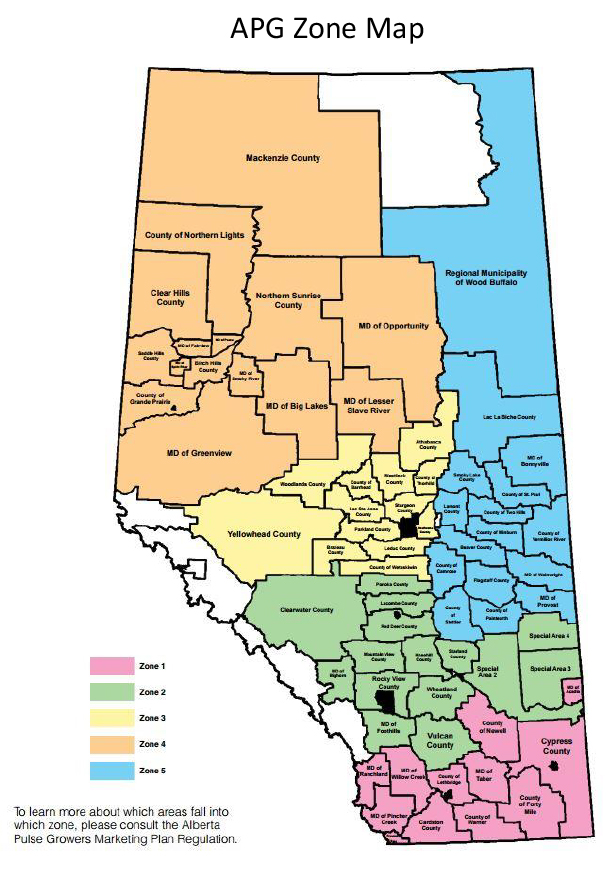| | Varieties | More information | Variety tables
This factsheet provides information on pulse variety performance within Alberta and northeastern British Columbia. Important agronomic characteristics and disease resistance information is provided for varieties of field pea, chickpea, lentil, fababean, dry bean and soybean.
The Alberta Regional Variety Testing program for pulse crops is co-ordinated by the Alberta Pulse Growers Commission (APGC) and Alberta Agriculture and Forestry (AF). Funding for the program is provided by AF, APGC and entry fees (private companies) for the varieties being tested.
Data for this publication are contributed by numerous applied research associations, the Prairie Grain Development Committee and AF.
Varieties
Variety choice is one of the important decisions any crop producer makes, and the choice should never be based solely on the genetic yield potential of a variety. Producers are encouraged to select varieties based on local growing conditions and planned end use.
As well, growers should consider other factors such as plant height, standability (lodging) at physiological maturity and disease/pest resistance when selecting which variety to grow. Using long-term, multi-site data will lead to the selection of the best, yield-stable varieties.

The yield comparison tables have several features:
- Overall actual yield of the standard check (kg/ha) based on all data available to the testing program is provided along with the number of station years of testing.
- Actual yield of the standard check in each growing area for field pea is reported.
- Overage yield of each variety is expressed relative to the standard check.
- Significant statistical differences relative to the standard check are indicated.
Yields that are statistically higher (+) or lower (-) than the check are indicated. No symbol after the yield figure indicates that there is no statistical difference from the check.
Producers should pay particular attention to data on new varieties that have not been fully tested. If a large difference from the check is reported but is not significant, it could mean that yields have varied widely and/or there are not enough data to prove a statistical difference. With additional years of testing, the reported yield differences will become more accurate.
The following regional trials were grown in 2018:
- 19 green and yellow pea trials in Alberta and 2 sites in British Colombia
- 12 fababean trials
- 9 lentil trials
- 3 wide row dry bean trials at Bow Island, Lethbridge and Vauxhall
- 1 narrow row dry bean trial in Lethbridge
- 8 soybean trials
More information
For additional information, including varieties not listed in this factsheet, call Alberta Agriculture and Forestry’s Ag-Info Centre toll-free at 310-FARM (3276). For other cropping information, refer to the website at agriculture.alberta.ca.
Variety tables
Crop
Field pea – yellow
Field pea – green
Dry bean – narrow row
Dry bean – wide row
Lentil
Soybean
Fababean
Source: Agdex 142/32-1. January 2019. |
|